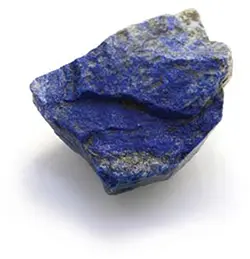
Discovering the Origins
Lapis Lazuli, a stone composed of lazurite, calcite, and pyrite, is renowned for its intense blue color with white or gold flecks. The name combines Latin and Persian origins, reflecting its deep historical roots. It is found in various locations, including the United States, Chile, Argentina, Italy, Afghanistan, Pakistan, and Russia.
Historical Significance and Lore
Sourced primarily from modern-day Afghanistan, Lapis Lazuli has been integral to Egyptian, Mesopotamian, Greek, and Roman civilizations. It has been used for thousands of years in jewelry, decorative objects, and as a pigment. Notably, it featured in King Tutankhamun’s burial mask and Vermeer’s famous painting, ‘Girl with a Pearl Earring’.
Healing Properties
Lapis Lazuli offers various healing benefits, including soothing inflammation, providing migraine relief, treating throat and ear issues, supporting the immune system, and lowering blood pressure. It’s also beneficial for eye health, particularly when rubbed with a heated stone.
Magical Uses
This stone is known for enhancing psychic abilities and balancing the throat chakra. Placing it on the third eye amplifies intuition, while wearing it at the throat improves communication and honesty. It is excellent for meditation and spiritual journeying.
Feng Shui Applications
In Feng Shui, Lapis Lazuli’s blue tone represents tranquil water energy. It is effective in the northern area and the Career/Path in Life sector of a home or room. The stone also supports the Family/Foundation and Knowledge/Wisdom sectors.
Personal and Spiritual Growth
As a stone of truth, Lapis Lazuli fosters self-awareness and inner truth discovery. Holding a tumbled stone can calm agitation and frustration, aiding in emotional release and spiritual growth.
